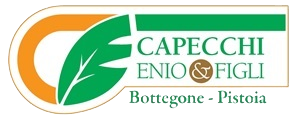When we talk about hollies (Ilex in Latin, to indicate specifically the genre) we could already imagine those beautiful plants with the most varied shapes and colors, from the most famous “Ilex Aquifoluim” to the many varieties, more than 400, that can adapt in many different climates and soils.
Looking a little bit to the history, we find that this plant was already widely used in Roman times when, during the winter solstice (the famous Saturnalia rites that were held around December 22), people were pinning twigs on the clothes to keep away evil and witchcraft.
It had the same value to the Germanic peoples- The British saw in its red berries the symbol of winter fertility and a return promise to light and heat.
This plant was entrusted with the role of talisman with the specific task to ward off evil influences and bring good fortune. Young shrubs were planted next to the houses and it was used to decorate homes.
Later on also the Christians, that were unable to turn away the very deep rooted tradition regarding the use of the holly in wintertime, have taken this symbol and changed its meaning comparing its thorns with the crown of Christ and its red berries with His blood .
Today, looking at this plant, you can not fail to emphasize its strength, its resistance and, at the same time, its grace and beauty. Apparently rejecting because of its thorns, it catches the eye for its colors, its mottling and its berries.
Colorful and durable, you can find it in an endless possibility of shapes, from the sapling to the bush, from the ball to the cone, to cheer and, why not, give a touch of good luck to hour home and gardens.
Some possible uses::
We are in winter time and you cannot help but emphasize how this plant can well represent the spirit of Christmas, giving joy and keeping misfortune away.
In addition to this, the holly is great for a variety of uses, thanks also to the fact that it has a lot of variations.
- As individual specimens with a tall trunk, considering that it can reach considerable heights (not so fast!) until 5 or 6 meters.
- As a great component of hedges, especially for those who want to maintain some privacy!
- As garden shrubs interspersed with other species composing flower beds or bottoms that need color throughout the year.
- As windbreaks, choosing the right varieties, even in coastal areas.
Shapes and colors:
The best known is the classic shrub with deep green leaves, thorns and red berries, represented by the school drawings of children and symbol for excellence of Christmas.
But the varieties are many, with spiny leaves or completely free of thorns, green or bluish, monochrome or variegated with gold or cream white strokes. Even the trunk can vary from classical to purple.
The berries are usually a bright red, and vary in size and quantity, sometimes big sometimes small clusters with numerous fruits. There are also varieties with yellow or blacks fruits, to make contrast with rich and intense leaves.
Concerning the shapes, depending on its use, it can be carved in cone, bush, ball, middle or tall trunk.
The most popular varieties:
For sure the classic Ilex Aquifoluim always remains a “must”. Unmistakable plant for its behavior and for the triumph of colors, it always represents a beacon of joy and good wishes in dark winter days.
It is also very resistant to many diseases and, not least, to the urban pollution, making it an interesting element to note for urban gardens and terraces.
It receives a lot of attention also the stunning variety with variegated leaves, with the same characteristics and with colors even more special.
Instead, an interesting innovation is the ‘Nellie Stevens’, varieties with dark green leaves, no thorns, and with lots of scarlet berries. Very resistant, it can grow almost anywhere.
Our proposal:
Here in the Vivai Capecchi, you can find a huge collection of Ilex, from Ilex Crenata to Ilex Crenata Convexa and Ilex Crenata Kimne, that we use both for the many forms of Topiary art, both for classical forms such as spirals, middle stem, tall stem, mini stem and Egyptian Pyramid, but also for the realization of Bonsai, both in Italian and Japanese style.
Going into detail our current production show off:
Ilex Aquifoluim available in the sizes: half stem, tall stem, cone, bush, ball, in multi stem with umbrella-like canopy (parachute).
Ilex Aquifolium “Alaska” available in the size bush
Ilex Aquifolium “Aureomarginata” available in the size mini stem.
Ilex Aquifolium “Golden King” available in the size bush.
Ilex Aquifolium “Silver Queen” available in the size mini stem.
Ilex Aquifoluim “Variegatum” available in the sizes: mini stem, middle stem, tall stem, cone, bush, and ball.
Ilex Aquifolium “Variegatum Pendula” available in the size tall stem.
Ilex Cornuta “Furcata” available in the size: middle stem, cone, bush and multi stem with umbrella-like canopy (parachute).
Ilex Meserveae “Blue Angel” available in the sizes: middle stem, bush and ball.
Ilex Mutchagara “Nellie R. Stevens” available in the sizes: mini stem, middle stem, tall ste, cone and bush.
Contact us for information or special requests, we are at your disposal!
